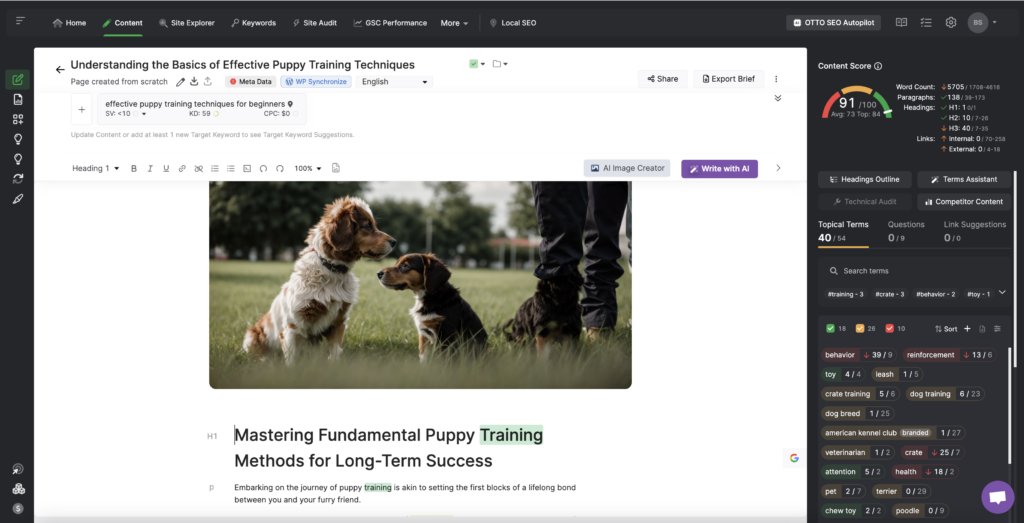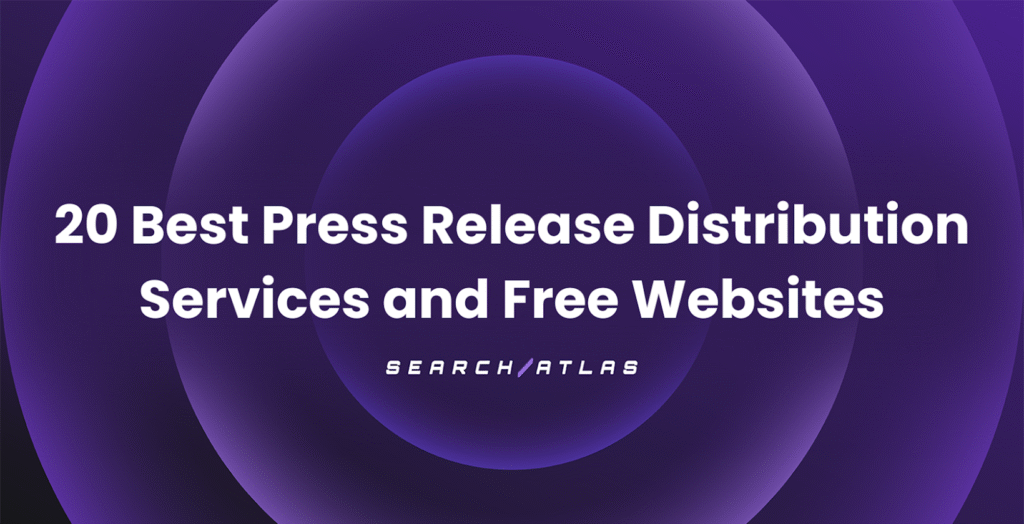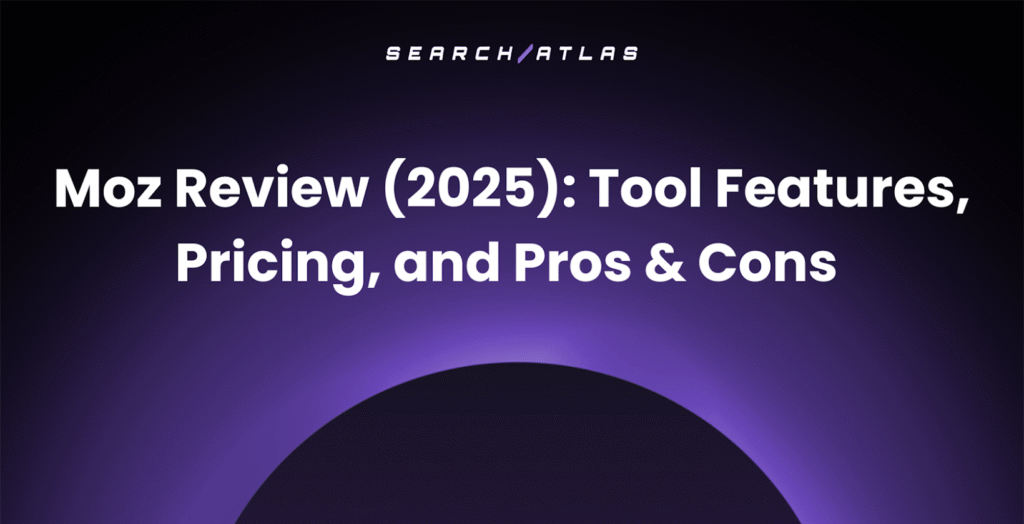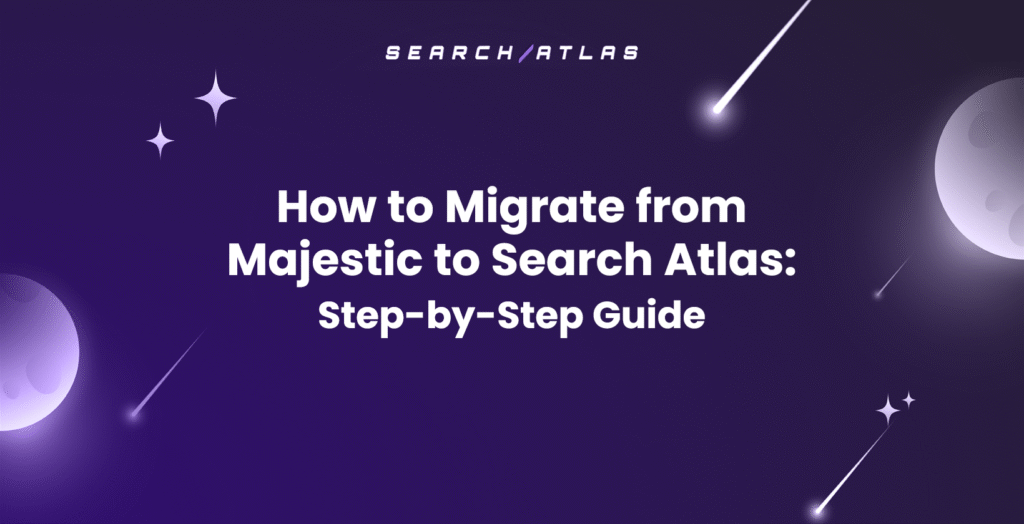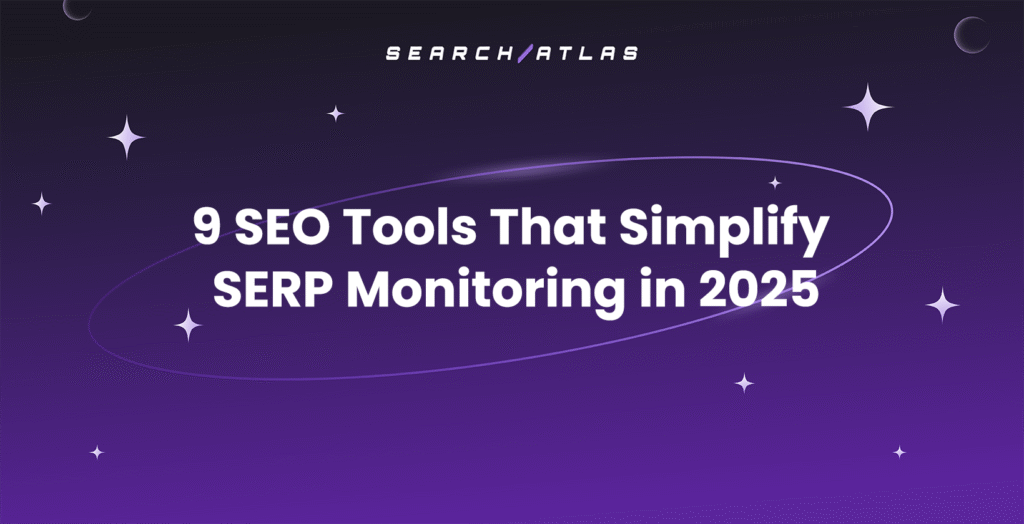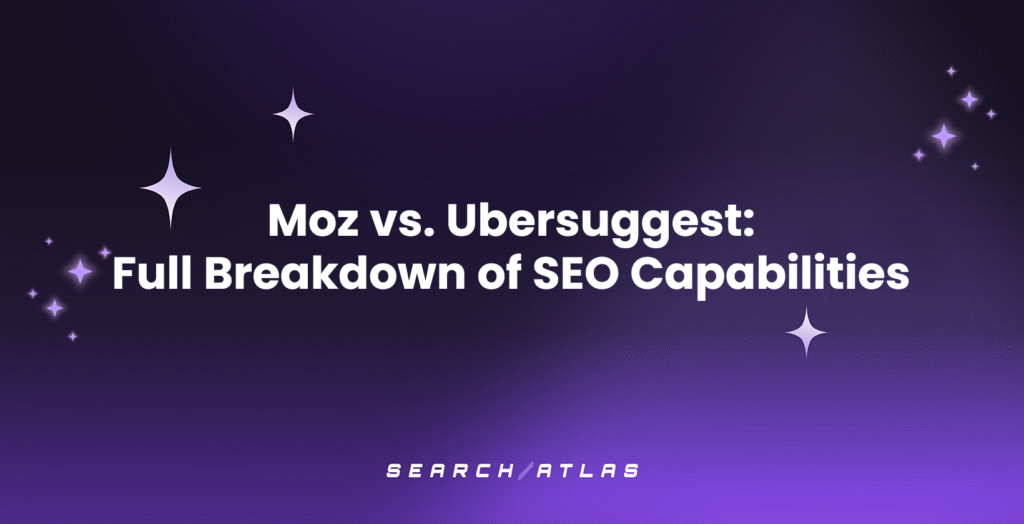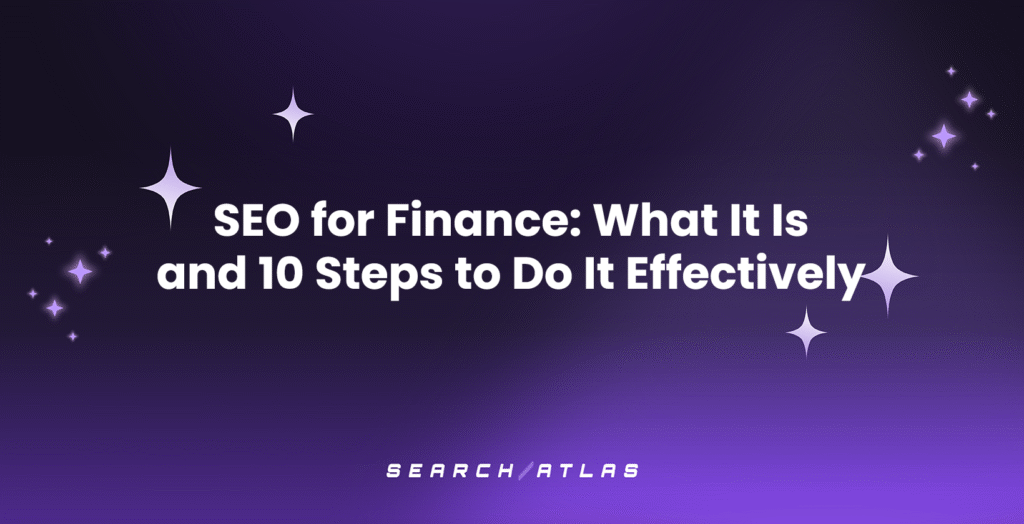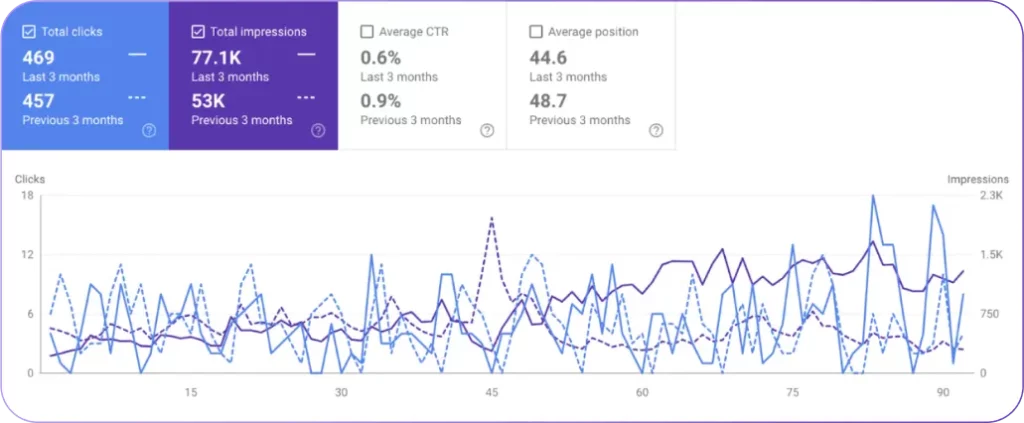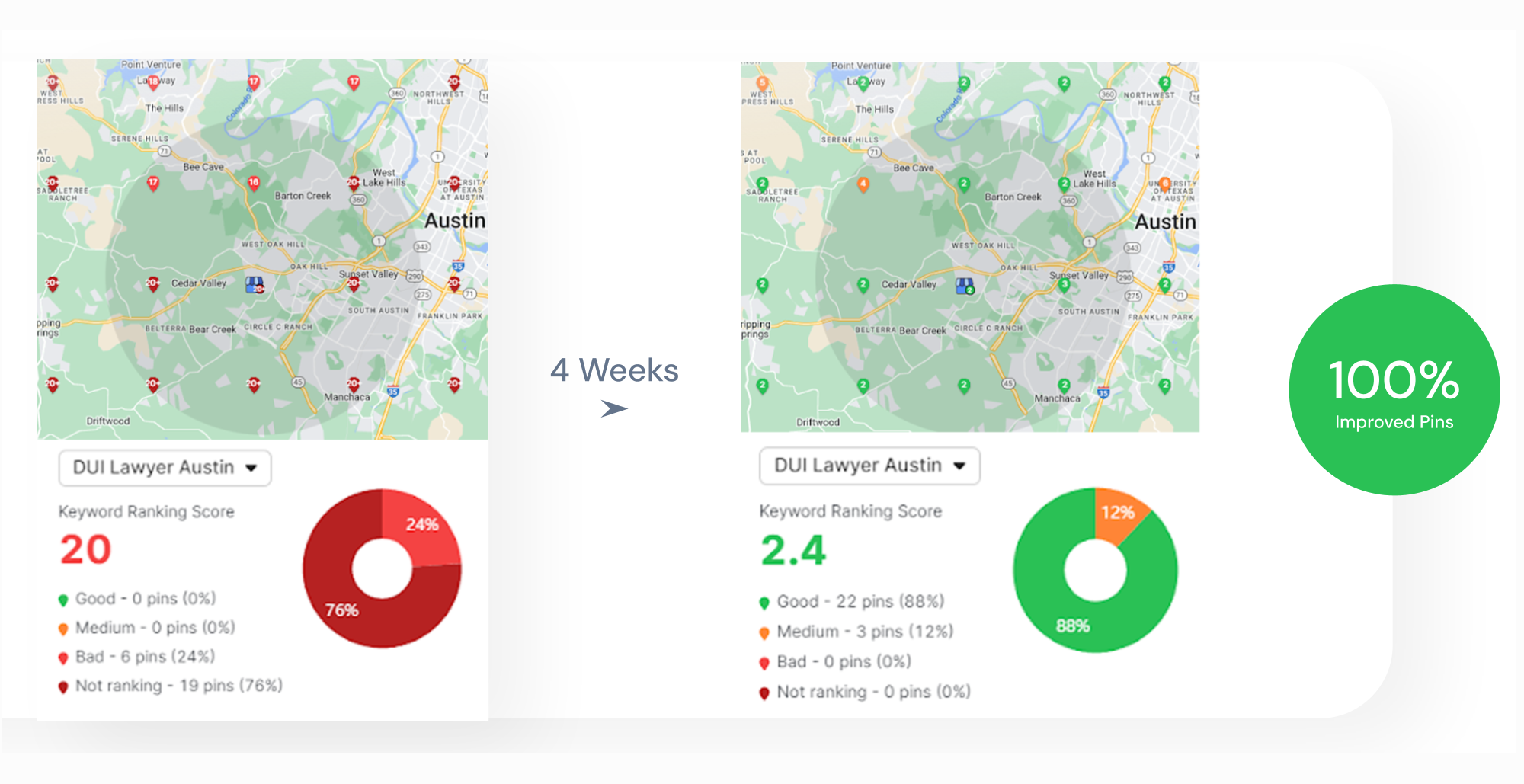Mastering on-Page SEO: Your Step-by-Step Guide to Perfect Optimization With a Free Template
Crafting content that ranks well on search engines necessitates a blend of art and science, particularly when it comes to on-page SEO.
With the right approach, a site can enhance its online visibility, attract more visitors, and solidify its domain authority.
The intricacies of on-page SEO can be daunting; however, this guide simplifies the process by providing a free, comprehensive template tailored for perfection in site optimization.
Whether just starting out or refining an established website, these actionable strategies offer a roadmap to elevating your digital presence.
In this article, we present essential insights and a step-by-step checklist to optimize each facet of your website’s pages, ensuring no detail is overlooked.
Key Takeaways
- On-Page SEO Is a Crucial Factor in a Website’s Ability to Rank and Engage Audiences
- Search Atlas Provides Tools to Streamline on-Page SEO Efforts and Ensures Alignment With SEO Best Practices
- Strategic Use of Keywords and the Creation of Engaging, Value-Driven Content Are Central to Effective on-Page Optimization
- A Well-Constructed Site Architecture Enhances Both User Experience and Search Engine Indexing
- Regular SEO Audits and Tracking of Performance Metrics Are Essential for Refining an on-Page SEO Strategy and Achieving Improved Search Visibility
Unlock Superior on-Page SEO With Our Proven Template

In the intricate realm of search engine optimization, on-page SEO emerges as a cornerstone, directly influencing a website’s ability to rank and engage with its intended audience.
Recognizing the paramount importance of this facet, Search Atlas extends an exclusive, robust on-page SEO template designed to serve as a foundational guide for content creators and marketing strategists.
This meticulously crafted tool not only simplifies the optimization process but also provides the flexibility needed to customize strategies aligning with the unique characteristics of individual sites.
Functioning as a versatile framework, the template empowers users to enhance their on-page elements systematically, ensuring that every page resonates with their target keywords and adheres to the most current SEO principles.
Access Your Complimentary on-Page SEO Template
Embarking on the journey of enhancing a website’s on-page SEO can be a daunting task for many, but with the aid of Search Atlas’s complimentary template, this crucial aspect of digital marketing is markedly simplified. The template stands as a beacon of efficiency, guiding content creators through the myriad of on-page factors that search engines deem critical for higher rankings and improved user experience.
Content marketing professionals can now obtain this valuable resource with ease, ensuring every element of their site pages — from meta titles and descriptions to headers and keyword usage — is calibrated to the highest standards of SEO. This strategic advantage is freely delivered to support businesses in crafting content that aligns seamlessly with their SEO objectives, fostering a more potent online presence.
Tailoring the Template for Your Website’s Specific Needs
Adapting Search Atlas’s versatile on-page SEO template ensures it resonates with the specific nuances of your company’s domain and clientele. This begins by thoroughly examining the site’s content and structure to identify unique elements that require tailored optimization techniques.
- Review existing page content to ensure alignment with target audience needs and preferences.
- Evaluate the current keyword strategy to identify gaps and opportunities for improvement.
- Assess the user experience to provide a seamless interaction for all visitors across devices.
Continued iteration and refinement of the on-page SEO template provide a strategic advantage that evolves with changing search engine algorithms and market trends. This dynamic approach positions an organization’s website to outperform competitors by delivering content that meets both search term relevance and user engagement criteria.
Demystifying on-Page SEO for Beginners and Pros
Mastering on-page SEO is akin to assembling a complex puzzle where each piece, from your meta tags to the quality of your content, must fit perfectly to reveal a clear image of online success.
This pursuit demands a nuanced understanding of the fundamentals of on-page SEO and a deep appreciation for its role in connecting with a discerning digital audience.
As the digital landscape becomes increasingly competitive, on-page SEO distinguishes websites that captivate and convert visitors from those that simply exist within the saturated confines of search engine results pages.
Understanding the Fundamentals of on-Page SEO
Grasping the essentials of on-page SEO forms the bedrock of any meaningful digital marketing strategy. It involves a comprehensive understanding of how different elements on a website’s individual pages contribute towards the collective goal of improved search visibility and user engagement.
Content creators and enterprise SEO professionals must prioritize relevant, high-quality content infused with strategically researched keywords while ensuring a seamless user experience to encourage positive interactions and a lower bounce rate.
Exploring Why on-Page SEO Is Crucial for Online Success
In today’s digital marketing landscape, on-page SEO stands as a pivotal component dictating the viability and prominence of any brand’s online real estate. Its importance stems from the capacity to enhance the relevancy and quality of a site’s pages, ultimately being a deciding factor in a page’s ascension through the ranks of SERPs.
It is crucial for organizations to embrace on-page SEO strategies, as these practices forge the initial connection with search engines and potential consumers alike. By refining on-page elements like title tags, headers, and keyword saturation, companies lay down the infrastructural SEO groundwork that supports the visibility and accessibility of their product pages, blog posts, and landing pages, enabling them to more effectively reach and engage their target audience.
Essential on-Page SEO Factors to Optimize Your Site
Navigating the terrain of on-page SEO demands a strategic approach that scrutinizes and synchronizes various elements to sculpt an admirable digital imprint.
As part of that endeavor, three pivotal categories emerge: Key Content Factors, Critical HTML Elements, and the Role of Site Architecture.
These areas, when optimized, serve as the bedrock of a site’s search optimization, allowing every other digital marketing effort to thrive on a solid foundation.
This systematic exploration into enhancing on-page SEO factors is designed to shepherd and streamline the optimization process for both nascent and seasoned content strategists alike.
Key Content Factors That Influence on-Page SEO
At the forefront of on-page SEO, content reigns supreme, serving as the primary conduit between a website and its intended audience. It’s imperative for content creators to meticulously weave target keywords into the fabric of high-quality, original material, ensuring it addresses the needs and queries of users while simultaneously adhering to search engine algorithms.
The richness and relevance of content are pivotal in influencing its efficacy in on-page SEO. Strategic placement of primary and long-tail keywords within engaging and informative text elevates a site’s relevance and authority in search results, thus drawing in more targeted traffic.
| On-Page Factor | Description | Impact on SEO |
|---|---|---|
| Quality of Content | Original, well-researched information that provides value to the reader. | Increases user engagement and time spent on the site, improving rankings. |
| Keyword Optimization | Appropriate use of relevant keywords within the content, including title, headers, and meta descriptions. | Enhances visibility for search terms, making it easier for search engines to index and rank the pages. |
Critical HTML Elements to Enhance Search Visibility
Navigating the technical intricacies of on-page SEO, one cannot overlook the essential role of HTML elements that serve as signposts for search engines. Integrative usage of these elements, such as tailored meta descriptions, alt attributes for images, and strategic tag hierarchy, paves the way for search engines to comprehend and rank site pages more effectively.
Search Atlas recognizes that every detail matters in the intricate dance of search visibility; therefore, the company’s sophisticated on-page audit tool meticulously evaluates these HTML components. This evaluation guarantees that each aspect, from schema markup to the presence of robots meta tags, is finely tuned to optimize the site’s communication with search engines, augmenting the opportunity for elevated ranking potential.
The Role of Site Architecture in on-Page Optimization
The blueprint of a website’s architecture plays a crucial role in the efficacy of on-page optimization. An orderly, logical site structure not only elevates the user experience but also streamlines the crawlability for search engines, ensuring that all content is easily discoverable and indexable:
| Site Architecture Aspect | Importance in SEO | Contribution to User Experience |
|---|---|---|
| Intuitive Navigation | Facilitates efficient indexing by search engines, assisting in organic ranking. | Allows for effortless browsing, reducing visitor frustration and bounce rates. |
| URL Structure | Enables better understanding of page content and hierarchy by search algorithms. | Provides clear, memorable pathways for users revisiting site pages. |
| Internal Linking | Spreads page authority and helps search engines establish content relationships. | Guides visitors to relevant content, improving retention and engagement. |
Search Atlas accentuates that a well-constructed site architecture not only serves as the scaffold for search optimization but also significantly impacts the way visitors interact with the website. Strategic internal linking, and optimized URL naming conventions, guide both users and search engines through a website’s content maze, making it crucial for organizations to invest in a coherent website architecture strategy.
Complete on-Page SEO Checklist for Impeccable Optimization
In the dynamic world of search engine optimization, on-page SEO represents a critical chapter in the digital marketing playbook, demanding meticulous attention from content strategists and webmasters.
To thrive in the contemporary landscape saturated with savvy consumers and intelligent algorithms, one must adopt a professional approach, optimizing every on-page factor with precision.
From the architecting of keyword-rich URLs that resonate with search engines to the sculpting of engaging meta descriptions that capture user interest, the elements of on-page optimization are numerous and varied.
These encompass curating concise page titles, organizing content coherently through headers, embedding keywords strategically throughout the text, enhancing articles with visuals, and strengthening the overall fabric of a website with a network of internal and external links.
Each step is vital in constructing an online presence that not only achieves optimum search engine rankings but also delivers an unparalleled user experience.
The following guide unfurls a comprehensive checklist, replete with actionable insights, ensuring every facet of on-page SEO is honed to perfection.
Crafting URLs With Keywords for Maximum Impact
In an online space where visibility is paramount, forging URLs with focused keywords is not just a tactic, but a strategic necessity. By harmonizing URLs with targeted search terms, content creators ensure that every page is both relevant to user queries and neatly cataloged by search engines.
Search Atlas reinforces the importance of a well-structured URL, as it forms the digital address of a site’s content – a crucial first impression for algorithms determining a page’s context and relevance. It is through these URLs that a website announces itself to the digital arena: succinct, keyword-rich, and structured for the ease of both search engines and users alike:
| SEO Aspect | Optimization Technique | Resulting Impact |
|---|---|---|
| Keyword-Enhanced URLs | Incorporation of relevant, primary keywords that define the page’s content | Better alignment with search queries, resulting in higher organic search visibility |
| URL Length and Clarity | Construction of concise URLs free from unnecessary parameters or excessive length | Improved user experience and usability, with potential for increased click-through rates |
| URL Consistency | Maintenance of a logical, predictable URL structure across the website | Facilitates ease of navigation and indexing, boosting the site’s SEO architecture |
This systematic approach to URL optimization is not just a detail in the broader scope of on-page SEO; it’s a defining factor that significantly influences a website’s capacity to communicate its relevance and value, both to its intended audience and the search engines that guide them.
Perfecting Your Page Titles for SEO and User Engagement
Page titles are the marquee of web content, offering audit insights and announcing the essence of the page to users and search engines alike. A finely honed page title can catapult a page’s visibility by striking a balance between SEO and the curiosity of potential visitors, prompting clicks and driving engagement.
Within the art and science of on-page SEO, carving out the perfect page title is an exercise in brevity and relevance:
- It starts with integrating the primary keyword seamlessly, molding it to capture the core message of the page content.
- Distilling the essence of the page into a concise, attention-grabbing headline, it magnetizes the eye of the user, enhancing the likelihood of selection amid the sea of search results.
- Finally, marrying SEO priorities with a clear value proposition, titles must resonate with the target audience, compelling them to explore the page in depth.
The construction of a compelling page title is not merely about embedding keywords; it’s about encapsulating the value of the page in a snapshot that intrigues both search engines and users, fostering a crucial connection from the onset of their search experience.
Organizing Content With Headers for Better Readability
Headers are not merely visual anchors in a sea of text; they are the guiding beacons that lead search engines and readers alike through the narrative of a webpage. Implementing a hierarchy of headers, from H1 through to H6 tags, content creators devise a roadmap within the content, which promotes both better user engagement and search engine crawlability.
Instituting a clear, logical progression in headers enables content to be effortlessly digestible, allowing readers to pinpoint the information they seek swiftly. Content strategists employ this stratification to delineate sections, making complex information palatable and enhancing the overall readability, a critical component in maintaining the attention of a diverse audience and optimizing on-page SEO.
Strategically Placing Keywords in Your Content
Strategic keyword placement goes beyond mere inclusion; it requires an astute understanding of how keywords interact with content to compel search engines to take notice. A content creator’s aim is to integrate target keywords naturally, enhancing the text without compromising the narrative flow or reader engagement.
The delicate art of keyword optimization involves a balance: Keywords must be prevalent enough to signal their importance to search engines, yet subtle enough to maintain the integrity of the content. It’s a nuanced practice that distinguishes compelling, searchable copy from content that fails to engage the dual audience of algorithms and humans:
| Strategic Placement | Keyword Relevance | Impact on Content Quality |
|---|---|---|
| Title Tags | Specifically chosen to reflect the core topic of the page with high relevance | Directly influences click-through rates from search result pages |
| Headings and Subheadings | Utilized to structure content and highlight important information | Improves readability for users and enables search engines to better understand content themes |
| Introductory and Concluding Paragraphs | Targeted for keyword emphasis, considering these areas carry significant weight | Enhances the topical prominence of the page, possibly boosting initial engagement |
Leveraging Visuals to Enrich the User Experience
Incorporating visuals into web content is a potent strategy that elevates not only the aesthetic appeal of a website but also enriches the overall user experience. Effective use of imagery, infographics, and videos can significantly reduce textual monotony, thus maintaining user engagement and promoting longer dwell times on site pages.
Search Atlas underscores the value of strategically chosen visuals that are relevant to the page content, as they can reinforce a message, simplify complex information, and evoke emotional responses. This thoughtful integration of visual elements plays a key role in improving user satisfaction, which indirectly contributes to the site’s search engine optimization performance.
Writing Compelling Meta Descriptions That Click
In the art of on-page SEO, the meta description acts as a succinct sales pitch that can enthrall potential visitors. A stellar meta description melds persuasive language with strategic keyword inclusion, catalyzing that pivotal click-through from the search engine results page (SERP) to the website.
The crafting of this vital snippet involves not just summarization but allure; it must encapsulate the value proposition of the page content while coaxing search engines and users with its clarity and relevance:
- Meta descriptions should entice with actionable language, prompting users to take the next step.
- Integrating the target search term in the meta description aligns it with user queries and SEO imperatives.
- Conveying a clear, compelling reason for users to choose the page over others in the SERP can markedly enhance click-through rates.
Enhancing Visuals With Descriptive Alt-Text
Optimizing on-page SEO extends into the realm of visual content, where descriptive alt-text plays a critical role. Alt-text offers a textual alternative to images, diagrams, and other non-textual elements on a webpage, providing context and clarity for both search engine crawlers and users who rely on screen readers:
- Descriptive alt-text bolsters SEO by enabling search engines to decipher the content and purpose of an image, contributing to the page’s overall relevance.
- It enhances accessibility, ensuring that all users, regardless of visual impairment, can grasp the information conveyed by visuals.
- By aligning alt-text with targeted keywords, content creators can further reinforce the topical authority of their webpage.
Incorporating well-crafted alt-text is not merely an add-on but an indispensable element of a holistic on-page SEO strategy. It ensures that visuals are not only appealing but functional components that enrich the user experience and amplify the page’s discoverability.
Bolstering SEO With Internal and External Linking Strategies
Embedding internal links is a strategic method to strengthen the architecture of a site while distributing page authority across its pages, boosting the site’s overall SEO profile. By consciously interlinking related content, organizations not only facilitate smooth navigation for visitors but also guide search engine crawlers through a network of relevant information, heightening their understanding of site content.
Conversely, the use of external links can be instrumental in establishing a website’s credibility and authority:
- Incorporating outbound links to authoritative and topical external content can enrich the user’s understanding and appreciation of the subject matter;
- It also signals to search engines the site’s connection to reputable sources, potentially affecting its own trustworthiness and rank in search results;
- Nonetheless, it remains essential to ensure these external links point to credible, high-quality resources to avoid diluting the site’s perceived value.
Scaling on-Page SEO Across Your Entire Web Presence
Embarking on the journey of mastering on-page SEO is a venture that requires careful consideration of each individual element on a website.
Yet, as businesses and content creators aspire to extend the reach of their online presence, the challenge intensifies when coordinating SEO efforts across an entire web portfolio.
To ensure consistency and effectiveness, it becomes vital to employ systematic methods, such as website crawling, to streamline on-page SEO strategies.
Performing comprehensive SEO audits is integral to refining and perfecting site architecture, with an eye on both search engine criteria and user navigation.
Likewise, standardizing on-page elements across various site pages becomes crucial to establishing a cohesive brand message.
This collective approach forms the nucleus of an optimized digital footprint, paving the way for enhanced visibility and audience engagement on a grander scale.
Streamlining on-Page SEO With Website Crawling
Website crawling serves as the backbone of Search Atlas’s suite of SEO tools, leveraging its capability to streamline the on-page SEO process across multiple site pages. By deploying crawlers that meticulously parse through a website, Search Atlas identifies areas for potential optimization, ensuring uniformity in SEO practices and pinpointing areas that may hinder search engine indexing.
The insights garnered from thorough website crawling allow organizations to make data-driven decisions, crafting a coherent SEO strategy that echoes across their entire online landscape. With Search Atlas, the intricate task of maintaining SEO consistency becomes a manageable endeavor, setting the stage for improved search engine performance and user navigation:
| Website Crawling Function | Purpose | Impact on On-Page SEO |
|---|---|---|
| Site Content Analysis | Assesses the quality and relevance of content across the website | Highlights areas for optimization to enhance topical authority and search visibility |
| Technical SEO Audit | Examines the structural aspects of the site, from URL hierarchy to internal linking | Identifies technical issues that could impede crawling, indexation, and ranking |
| SEO Consistency Check | Ensures uniform application of SEO best practices across all web pages | Creates a cohesive and powerful SEO narrative, elevating the entire site’s performance |
Performing Thorough SEO Audits to Refine Site Architecture
Comprehensive SEO audits constitute the linchpin for refining a website’s architecture, and therein lies the prowess of Search Atlas’s sophisticated algorithms. The platform meticulously dissects every architectural component, spotlighting inconsistencies and discrepancies that undermine a site’s SEO framework, thus facilitating a more deliberate and informed redesign process.
By leveraging Search Atlas’s analytical acumen, organizations can unearth structural inefficiencies, such as convoluted navigation paths or suboptimal internal linking, which could stifle a site’s organic growth. This granular examination equips them with the actionable insights needed to engineer a website that is as navigable for search engines as it is intuitive for users, bolstering the site’s position in the digital ecosystem.
Standardizing on-Page Elements for Cohesive Brand Messaging
Ensuring a uniform display of on-page elements elevates a brand’s digital narrative, fostering a seamless user experience that reinforces brand identity. By harmonizing the application of titles, meta descriptions, and keyword distribution, Search Atlas aids companies in embracing cohesive brand messaging. This harmonization paves the way for a consistent and recognizable brand presence that resonates with both search engines and consumers.
Through the deliberate standardization of on-page SEO factors, Search Atlas equips businesses with the ability to convey a uniform brand story across all digital content. This meticulous approach to standardization helps in establishing a clear, consistent brand voice, which is instrumental in building trust and loyalty among target audiences, ultimately contributing to a stronger, more unified online footprint.
Applying Your on-Page SEO Knowledge for Peak Performance
Embarking on the quest for digital preeminence invites a meticulous focus on on-page SEO, a practice steeped in both art and science, pivotal for transforming the esoteric into the empirical.
Navigating this landscape demands that practitioners not only grasp the intricacies of optimization strategies but also possess the acumen to transmute theory into measurable outcomes.
By harnessing the insights derived from effective on-page methods and diligently tracking progress, companies stand poised to reap the tangible benefits of heightened search visibility and user engagement — a testament to a masterfully implemented SEO strategy.
This section explores the critical steps to converting on-page SEO knowledge into palpable wins, ensuring that every calibrated meta tag and every strategic keyword propels a website toward its zenith.
Converting on-Page SEO Insights Into Tangible Results
Applying on-page SEO insights with tactical proficiency elevates the productivity of digital marketing campaigns, translating intricate strategy into discernible, rewarding metrics. By refining on-page factors, companies witness an uplift in site visibility and user interactions, benchmarks indicative of a successful SEO journey that moves beyond guesswork into strategic execution.
Organizations leveraging such insights from tools like Search Atlas develop a keen understanding of their content’s performance in the digital space. This deliberate examination fuels optimization efforts and sets the stage for ongoing refinement, enabling businesses to achieve sustained excellence in search engine rankings and audience engagement.
Implementing and Tracking Your on-Page SEO Strategy for Success
Effective implementation of an on-page SEO strategy hinges on the meticulous application of insights garnered from platforms like Search Atlas. This entails a concerted effort to apply data-driven recommendations to optimize web pages, thereby enhancing their search engine visibility and user engagement.
Tracking the performance of these efforts is critical; businesses must diligently monitor key performance indicators (KPIs) to gauge the efficacy of their on-page SEO tactics. Success is reflected in the subsequent improvements in rankings, traffic, and user behavior metrics such as bounce rate and average session duration.
| On-Page SEO Element | Action Taken | KPI Monitored | Desired Outcome |
|---|---|---|---|
| Title Tags | Integrate primary keywords and ensure brevity. | Click-Through Rate (CTR) from SERPs | Increase in user traffic from search results. |
| Meta Descriptions | Embed target keywords and craft compelling copy. | CTR from SERPs | Higher CTR indicating effective user enticement. |
| Content Quality | Enhance text with valuable, keyword-rich information. | Bounce Rate & Average Session Duration | Lower bounce rate and extended user engagement on the page. |
Frequently Asked Questions
What is on-page seo and why is it important for website optimization?
On-page SEO refers to the practice of optimizing individual web pages to rank higher and earn more relevant traffic from search engines. It encompasses both the content and HTML source code of a page that can be optimized, playing a pivotal role in the overall effectiveness of SEO strategies as it makes content more appealing to both search engines and users.
How can i optimize my website’s content to improve its search engine visibility?
Optimizing a website’s content for search engine visibility involves using a multi-faceted approach that includes keyword research to ensure target topics resonate with an audience, and deploying on-page optimization techniques. Tools like Search Atlas assist with this process, offering a suite of features such as a Site Explorer and Content Planner, which streamline the creation and analysis of content to effectively attract and engage visitors.
What are some key on-page seo factors that i should consider when optimizing my site?
Key on-page SEO factors to consider during optimization include the quality and relevance of your content, the use of target keywords, site loading speed, mobile-friendliness, well-crafted meta titles and descriptions, user experience, and internal linking structure. Additionally, ensuring that images have alt tags, headers are effectively used to organize content, and your URL structure is clean and descriptive, will further enhance your site’s on-page SEO.
Is there a checklist or template available to ensure that i cover all aspects of on-page seo?
Indeed, Search Atlas provides a comprehensive On-Page Audit Tool which acts as a checklist to ensure all aspects of on-page SEO are thoroughly covered. This includes a template to guide users through vital areas such as title tags, meta descriptions, header tags, and keyword usage, streamlining the optimization process for content creators.
How can i scale on-page seo across multiple pages and ensure consistent optimization?
Scaling on-page SEO across numerous pages while maintaining consistent optimization can be challenging for any content creator or SEO strategist. To effectively manage this process, utilizing an advanced SEO toolkit like Search Atlas can streamline and enhance the optimization effort. The platform offers a suite of tools, including the On-Page Audit Tool and SEO AI Otto, which together provide a comprehensive approach to auditing site pages, suggesting content improvements, and ensuring each page is aligned with overarching SEO strategies.
By integrating a Content Planner, Search Atlas further supports SEO efforts by offering insightful blog ideas and helping to develop a cohesive keyword strategy that caters to the target audience’s search queries. The platform’s Topical Map aids in visualizing the organization’s content landscape, ensuring that all content efforts contribute towards a unified marketing strategy that is designed to boost search engine visibility and attract more visitors.
Moreover, the use of technical SEO tools like the Site Explorer and Domain Authority Checker helps businesses assess the strength of their domain and understand the impact of backlinks on their SEO performance. For content teams, the ability to generate targeted keyword ideas using comprehensive Keyword Research tools is essential in creating content that resonates with consumers and aligns with business goals.
In summary, leveraging the right combination of Search Atlas’s SEO and content marketing tools enables companies to scale their on-page SEO efforts effectively, optimize content across multiple pages, and ensure that each stage of their digital marketing campaigns contributes to a cohesive and successful inbound marketing strategy.
Conclusion
Mastering on-page SEO is essential for your website’s success.
By following our comprehensive guide paired with a free template, you can ensure that every page on your site meets the highest SEO standards.
Utilizing our strategic tips and techniques will boost your site’s relevance, improve search rankings, and enhance user engagement.
Apply the knowledge to fine-tune page titles, meta descriptions, and keyword placement while reinforcing your site with a solid architecture and engaging visuals.
By systematically implementing these on-page factors and tracking their impact, your business will witness a significant improvement in digital presence and performance.
Remember, perfecting on-page SEO is not a one-time task but an ongoing process that can elevate your online visibility and audience connection to new heights.

